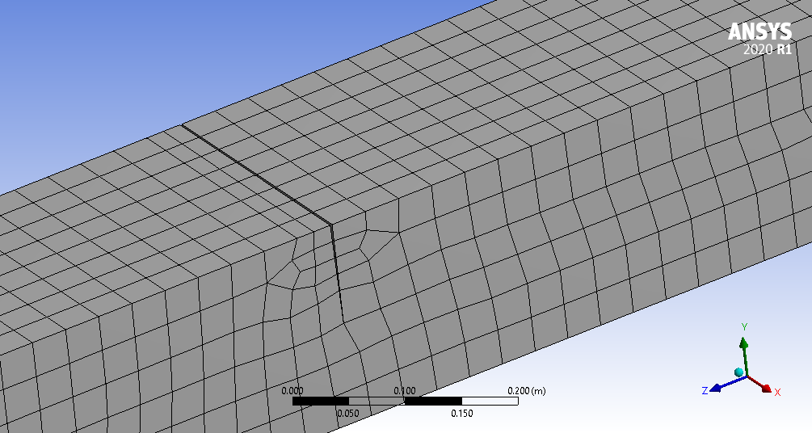Project definition
It is well known that cracks are a main cause of structural failure. Cracks change the dynamic performance of the structure and observing this change, the crack depth size and position of crack can be predicted.
Modal analysis yields different frequencies of vibration for a number of mode shapes. For a cracked structure, modal analysis is of immense importance as Crack creates discontinuities in a structure.
Discontinuities in a structure introduces local flexibility that affects the vibration response.
Model geometry
For modal analysis, a steel cantilever beam of length 1m, width 0.25m and depth 0.2m is considered.
It is assumed that crack has uniform depth across the width of the cantilever beam.
Hexahedral element meshing for uncracked model
Minor crack with width of 0.002 m and depths of 0.1 m
Uncracked cantilever beam frequency in mode 1
Uncracked cantilever beam frequency in mode 2
Uncracked cantilever beam frequency in mode 3
Uncracked cantilever beam frequency in mode 4
Uncracked cantilever beam frequency in mode 5
Uncracked cantilever beam frequency in mode 6
Cracked cantilever beam frequency in mode 1
Cracked cantilever beam frequency in mode 2
Cracked cantilever beam frequency in mode 3
Cracked cantilever beam frequency in mode 4
Cracked cantilever beam frequency in mode 5
Cracked cantilever beam frequency in mode 6
Results and Observations
As cracks reduce the stiffness of a structure, they result in a decrease in natural frequencies.
The reduction in natural frequencies is more prominent in modes where the crack is influential.
Modes associated with motion primarily concentrated in the vicinity of the crack experience more significant frequency reductions.
We can clearly see a deviation in Mode 3. When there is such deviation in modal frequencies, we can relate this to the presence of some kind of defect or abnormality in the body which in this case is the presence of a crack.

















